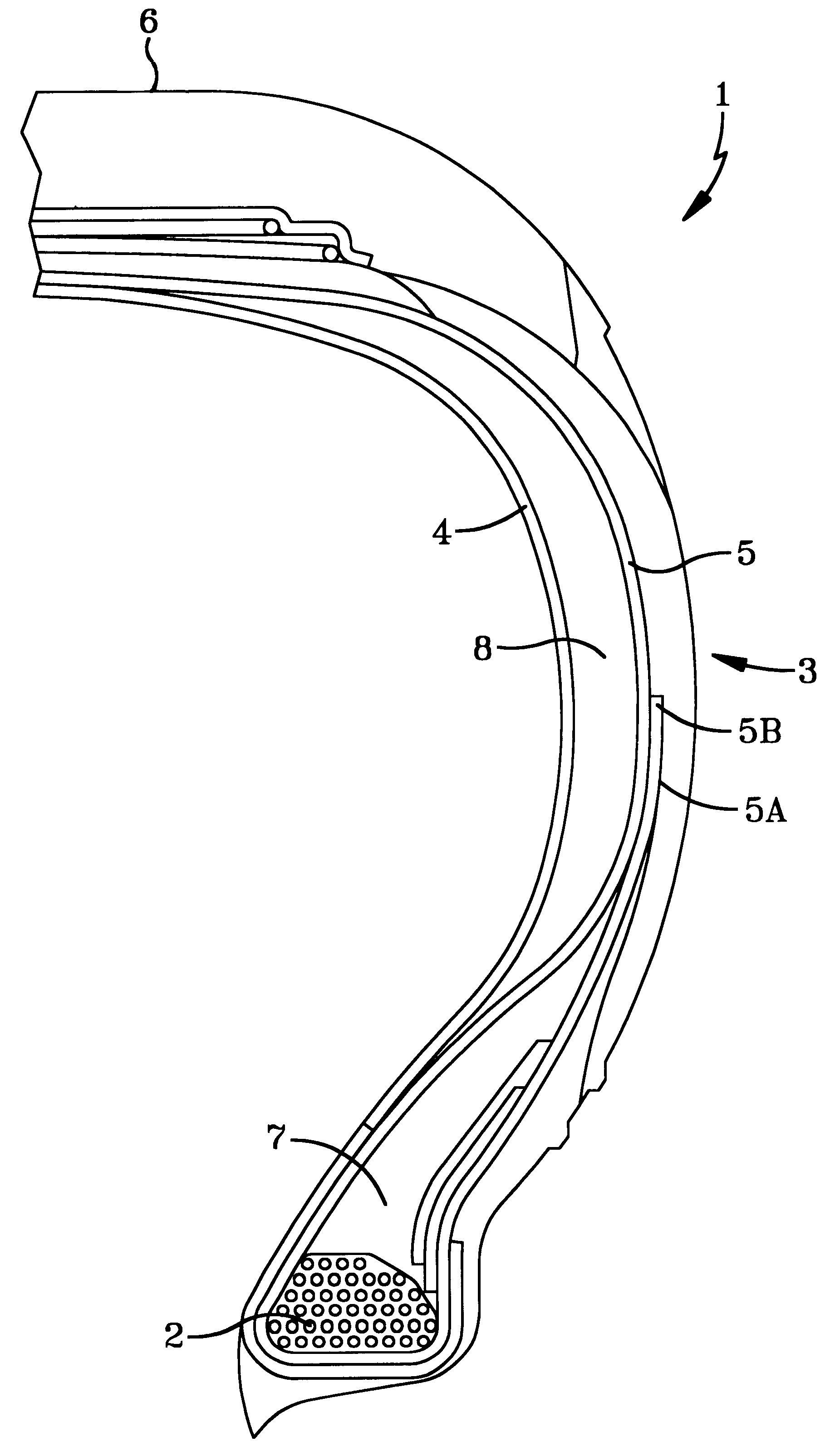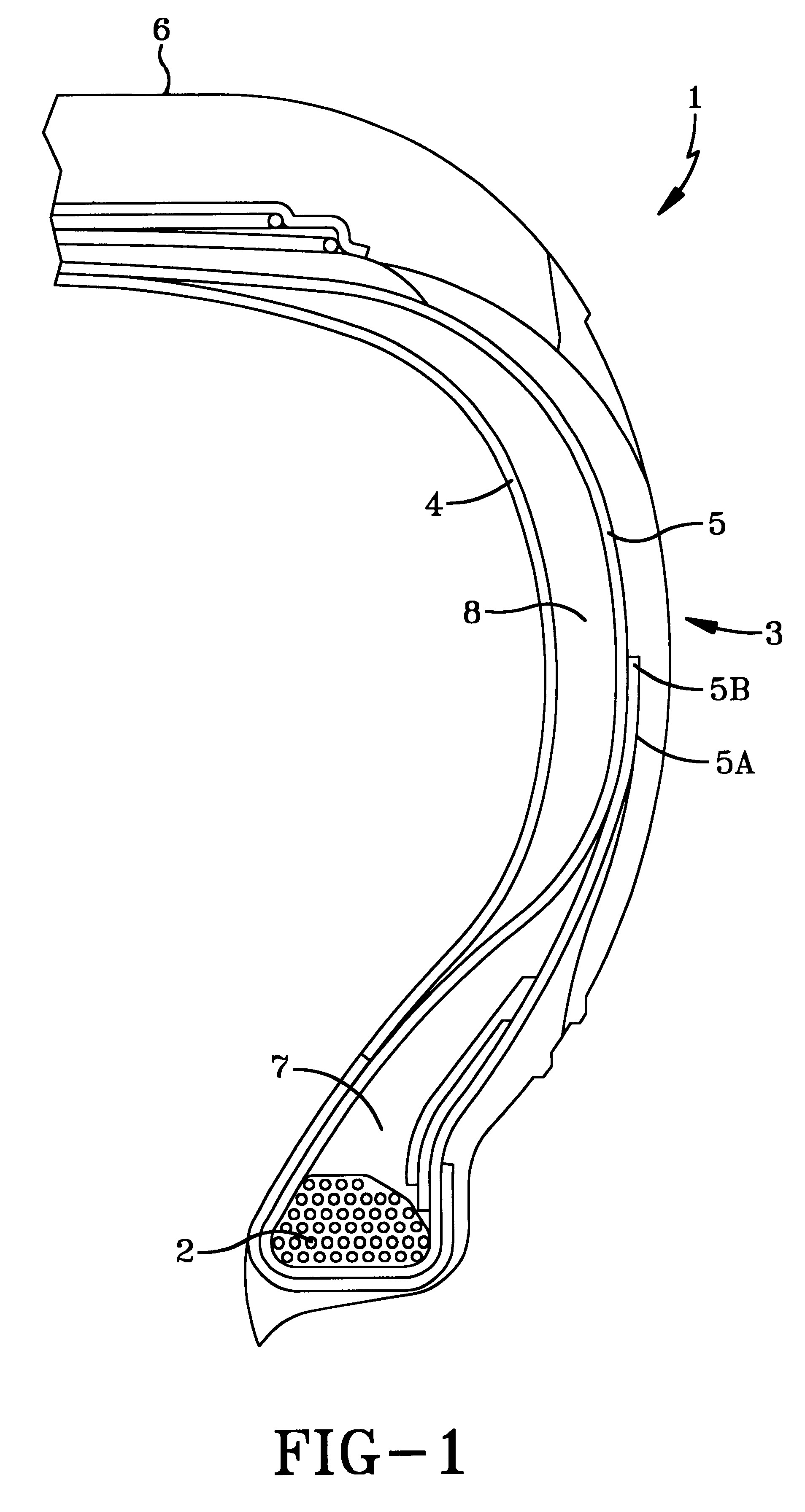Tire with sidewall rubber insert
a technology of rubber insert and sidewall, which is applied in the field of pneumatic tires having rubber inserts, can solve the problems of adversely affecting the other desirable properties of rubber compositions, increasing the softness of vulcanizate, and adversely affecting physical properties, so as to improve the properties of vulcaniza
- Summary
- Abstract
- Description
- Claims
- Application Information
AI Technical Summary
Benefits of technology
Problems solved by technology
Method used
Image
Examples
Embodiment Construction
Rubber compositions are prepared which contain the materials shown in Table 1 which recite a Control rubber composition as Sample A as well as experimental rubber compositions as Samples B, C and D which contain, variously, a dispersion of a particulate ultra high molecular weight polyethylene (UHMWPE) and starch composite.
Ingredients, other than sulfur and accelerator(s), are mixed in sequential two non-productive mixing stages to a temperature of about 170.degree. C. for about 5 minutes for each stage in an internal rubber mixer. All of the non-productive ingredients were introduced in the first non-productive mixing stage, or operation. The term "non-productive" means without sulfur curatives and is a term well known to those skilled in such art.
Sulfur and cure accelerator(s) were then mixed in a subsequent mix stage, often referred to as a "productive" mixing stage, in an internal rubber mixer for about 2 minutes to a temperature of about 115.degree. C.
Table 2 reports the cure b...
PUM
| Property | Measurement | Unit |
|---|---|---|
| softening point | aaaaa | aaaaa |
| softening point | aaaaa | aaaaa |
| softening point | aaaaa | aaaaa |
Abstract
Description
Claims
Application Information
 Login to View More
Login to View More - R&D
- Intellectual Property
- Life Sciences
- Materials
- Tech Scout
- Unparalleled Data Quality
- Higher Quality Content
- 60% Fewer Hallucinations
Browse by: Latest US Patents, China's latest patents, Technical Efficacy Thesaurus, Application Domain, Technology Topic, Popular Technical Reports.
© 2025 PatSnap. All rights reserved.Legal|Privacy policy|Modern Slavery Act Transparency Statement|Sitemap|About US| Contact US: help@patsnap.com


